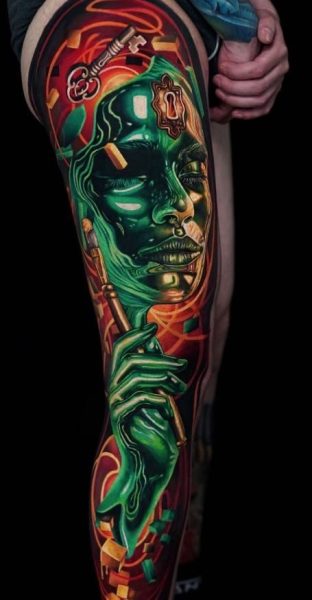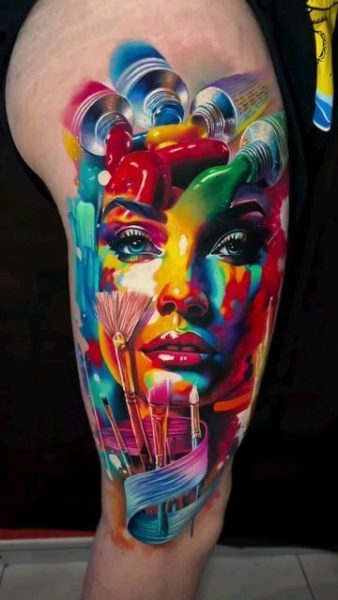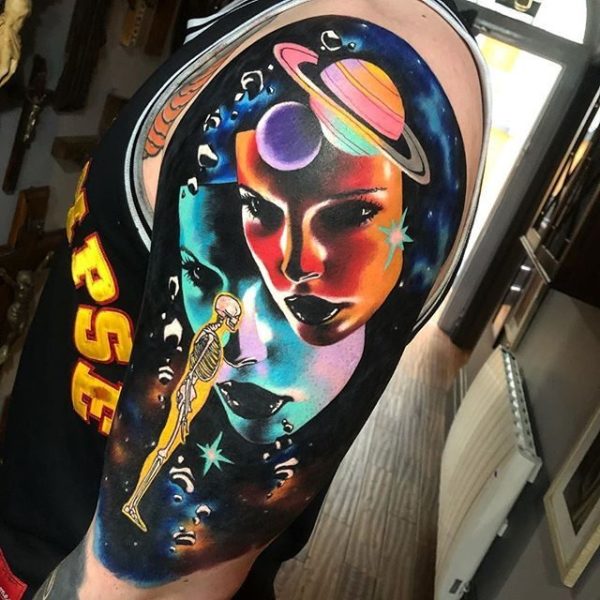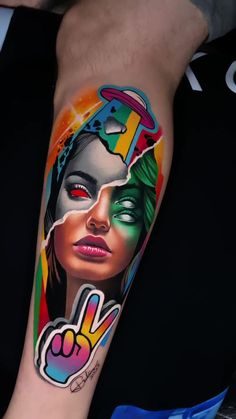
In the realm of body art, tattooing stands out as an enduring form of self-expression, evolving from simple symbols to intricate masterpieces adorning human skin.
Among the various styles, realistic tattoos have emerged as a captivating genre, where skilled artists bring images to life with stunning detail and precision. This article delves into the world of realistic tattoos, exploring their intricacies, techniques, and the artists who breathe life into them.
Realistic tattoos, also known as hyper-realistic or photorealistic tattoos, aim to replicate images with such precision that they appear like photographs on the skin.
These tattoos often depict portraits, animals, landscapes, and objects with lifelike detail, creating a sense of depth and dimension. Unlike traditional tattoos, which may rely on bold outlines and vibrant colors, realistic tattoos use shading, highlights, and meticulous linework to achieve their lifelike appearance.

The process of creating realistic tattoos begins with a collaborative effort between the artist and the client. Artists work closely with clients to understand their vision, gather reference images, and ensure that the design suits the anatomical contours of the body.
This collaborative approach allows for personalized and meaningful tattoos that resonate with the wearer on a profound level.
One of the hallmarks of realistic tattooing is the skillful use of shading and contrast to create depth and realism. Artists employ various techniques, such as stippling, blending, and layering, to achieve smooth transitions between light and shadow.
By meticulously studying light sources and understanding how they interact with different surfaces, artists can imbue their tattoos with a sense of three-dimensionality, making the images come alive on the skin.
Achieving realism in tattoos requires not only technical proficiency but also a deep understanding of human anatomy and artistic principles.

Many realistic tattoo artists undergo extensive training and apprenticeships to hone their craft, mastering techniques that enable them to push the boundaries of what is achievable in tattooing.
From perfecting the texture of fur to capturing the subtle nuances of facial expressions, these artists demonstrate a remarkable level of skill and artistry in their work.
In recent years, advancements in tattoo technology, such as improved ink formulations and state-of-the-art tattoo machines, have further elevated the art of realistic tattooing.
Artists now have access to a wider range of colors, tones, and techniques, allowing them to achieve even greater levels of realism and detail. Additionally, the growing popularity of social media platforms has provided a platform for artists to showcase their work and connect with a global audience, driving innovation and pushing the boundaries of what is possible in tattoo artistry.
Beyond their aesthetic appeal, realistic tattoos often hold deep personal significance for those who wear them. Whether commemorating a loved one, celebrating a milestone, or expressing one’s passions and interests, these tattoos serve as enduring symbols of identity and self-expression.

Each tattoo tells a unique story, capturing a moment in time and preserving it in artful detail.
In conclusion, realistic tattoos represent a fusion of art and anatomy, where skilled artists transform skin into canvas and ink into lifelike imagery.
Through meticulous attention to detail, expert craftsmanship, and a deep understanding of human form, these tattoos push the boundaries of what is possible in tattoo artistry. From capturing the subtle nuances of nature to immortalizing cherished memories, realistic tattoos continue to captivate and inspire both artists and admirers alike.





